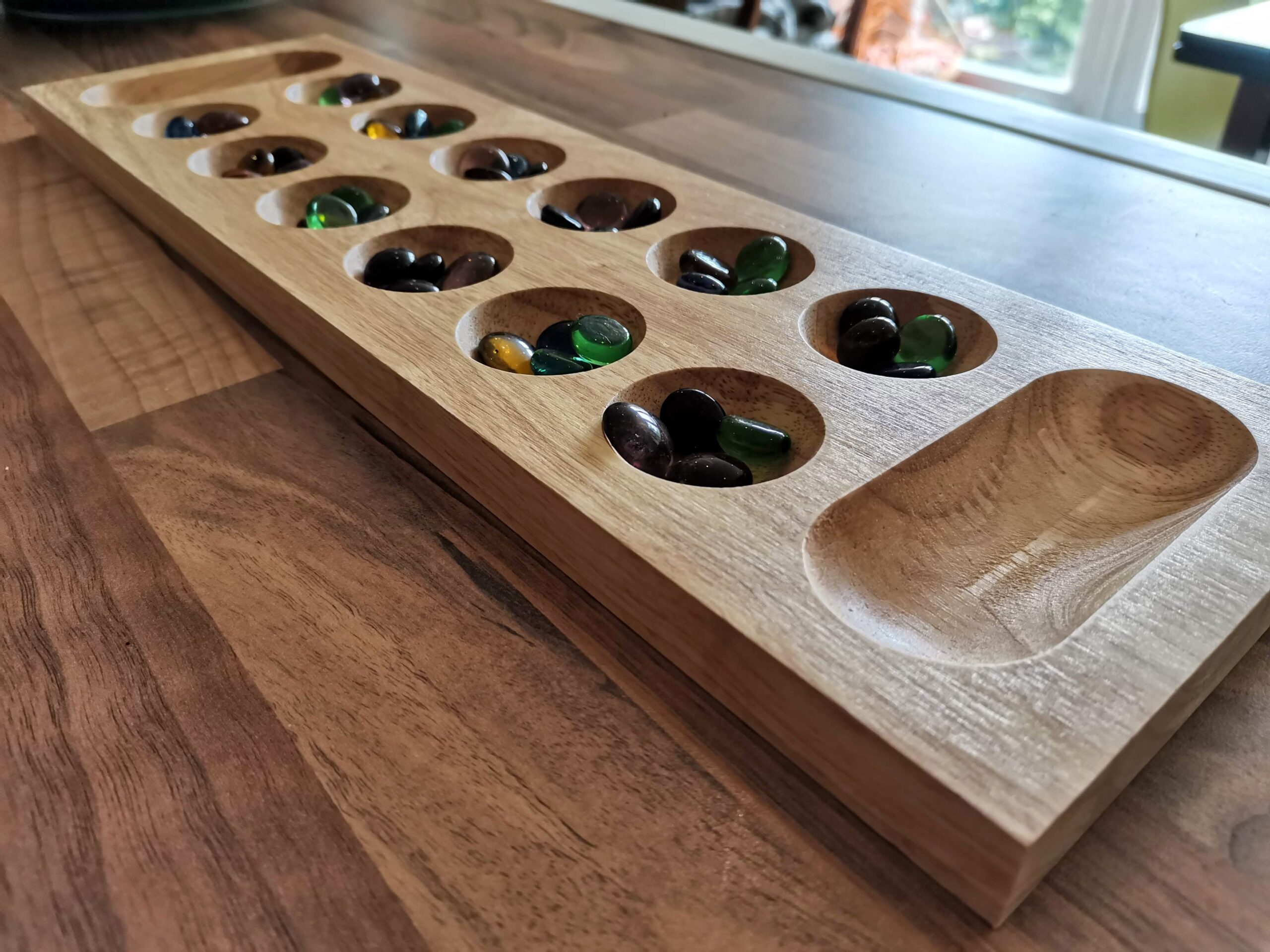Luthier Preview
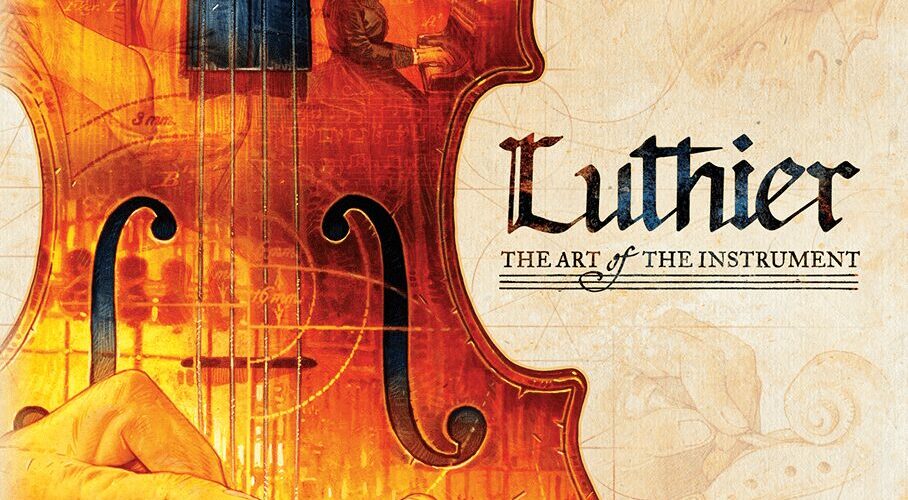
Disclaimer: I was provided with a prototype preview copy of the game. Rules, artwork and all other aspects of the game are subject to change before final release.
My favourite pieces of classical music tend to either start or end strongly. With that in mind, this preview of Paverson Games latest title – Luthier – will start like Bach’s Toccata and Fugue in D minor, starting with a headline. Luthier is a great game. A pipe organ cuts the silence. The blind bidding clack-clack-clack of the worker disc placement adds a rich, bright counterpoint to the by-the-books Euro format of collecting resources to fulfil goals. A toccata to its fugue, if you will. The result is a clean, competitive, engaging game. Heavier than medium-weight, without being too difficult to teach or pick up, but with a richness that rewards repeated play. Again, much like Bach’s piece. We all know how it starts, and the more you listen to it, the more you appreciate what comes after that familiar early exposition.
Booze and music – a festival?
I previewed Dave Beck’s previous game, Distilled, a long while ago. I really like that game, so I was excited to see an earlier prototype of Luthier back at the UK Games Expo in 2023 (show report here). It was little more than black squares on white paper at that time, but the mechanisms sounded really clever, and I loved the unusual theme. The promise of Vincent Dutrait’s artwork gave me confidence, and that confidence was rewarded when I saw the near-final prototype at this year’s UK Games Expo. Luthier is beautiful. Rich colours, gorgeous illustrations, and some pretty fantastic iconography.
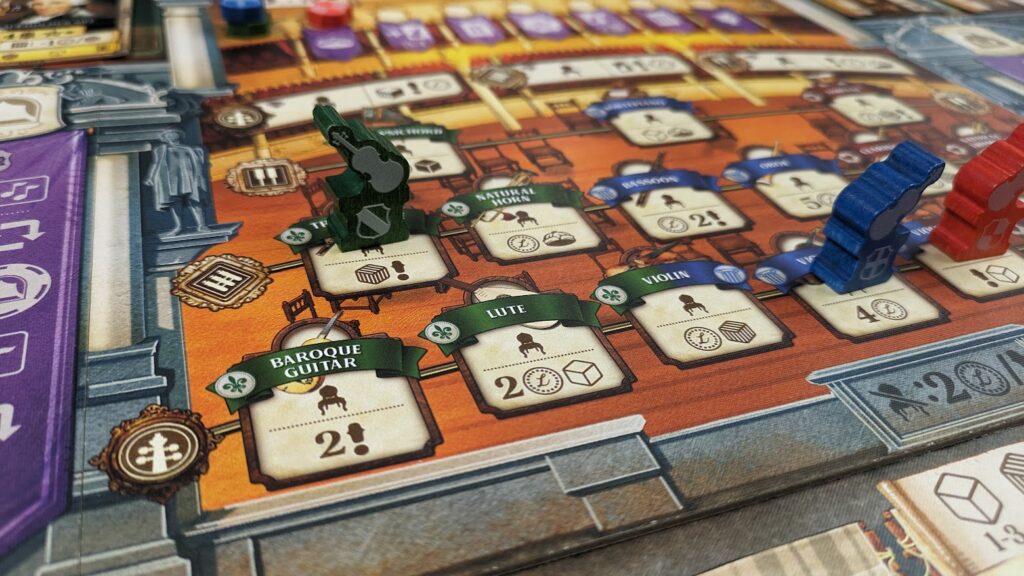
The game places you in the role of a famous musical instrument-making family from the past. Your goal is to gather the materials you need, before crafting the finest musical instruments you can, fit for performances at the orchestra in the middle of the board. At the same time, art is imitating life through the patrons in the game. These are rich, powerful people who, if you can keep satisfied, will reward you with gifts. If you manage to fulfil all of their demands, their card ends up tucked behind your player board with ongoing bonuses for the rest of the game.
You might think you can just choose to ignore the patrons and concentrate on something else to build points, and while you technically can, you probably don’t want to. If you let a patron’s cube move all the way to the right as the rounds progress, they get tired of you and leave your family’s business, clobbering you with a loss of VPs (prestige points in Luthier’s parlance) in the process. This happened in reality. Patrons rewarded the arts for performances and productions, they invested in the families and their crafts.
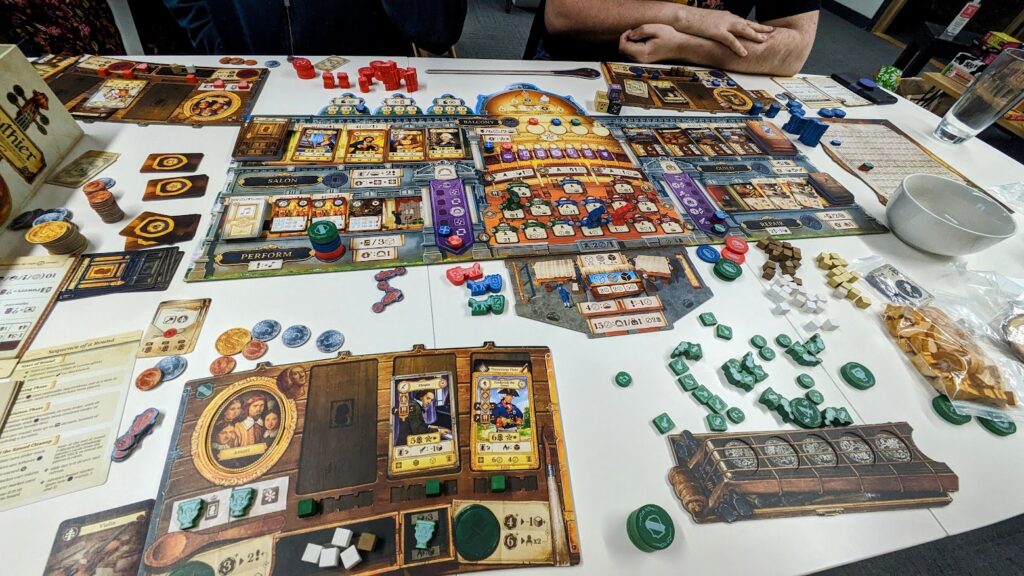
In Luthier you have a game where your main goals and main source of points come from the various places these artisans touched with their craft. Patrons have a place on the board (the salon) where you can compete to add them to your family’s board. Instrument designs come from another contestable market. Performances are fought over in the same fashion, likewise repairs. All go towards your score, and all are involved in one of the main aims of the game, to claim First Chair for each instrument in the orchestra pit.
Harmony
Luthier is a strange one in some ways. As with many other Euro games, the theme strikes me as one that could have been replaced with something different relatively easily. We could be furniture makers making beautiful pieces and selling them. We could be painters creating masterpieces and vying for space in galleries. We could even be toymakers trying to be front-and-centre in Hamley’s window in London.
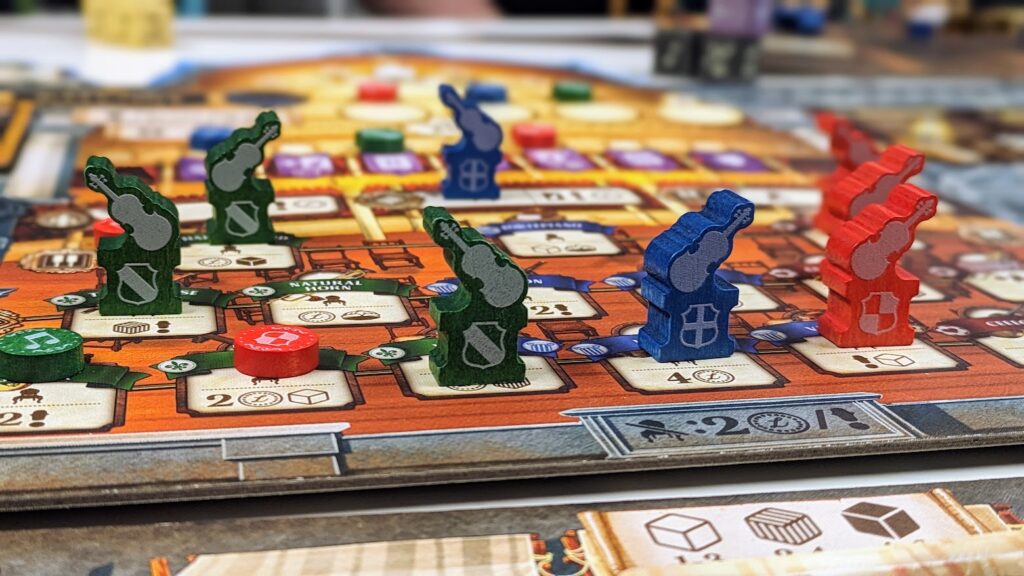
That said, however, the theme is integrated so well in Luthier that I don’t want a different one. I’ll admit I found a slight disconnect with the way the instruments just end up in First Chair, as do performance tokens. The performers themselves are never referenced or attributed, which felt odd at first, but then I realised I need to take a step back and understand that the entire game is viewed through the luthier’s lens. Their role starts and ends with the creation and repair of the instruments in their workshops. The instruments are used in the performances, but who uses them isn’t the focus of the game. Our main focus is to rough-out instruments before finishing them and creating things of beauty.
It all works so well together. The resources are limited to just three different types: animal products, wood, and metals. Removing the mental overhead needed to think about lots of different types of resources and manage any potential upgrade paths for them is an overlooked piece of game design in my opinion. At any moment in the game you can look at your player board, count the cubes in three colours, and know exactly what you can and cannot afford to do. This gives you the laser focus you need to concentrate on your strategy and your path to victory.
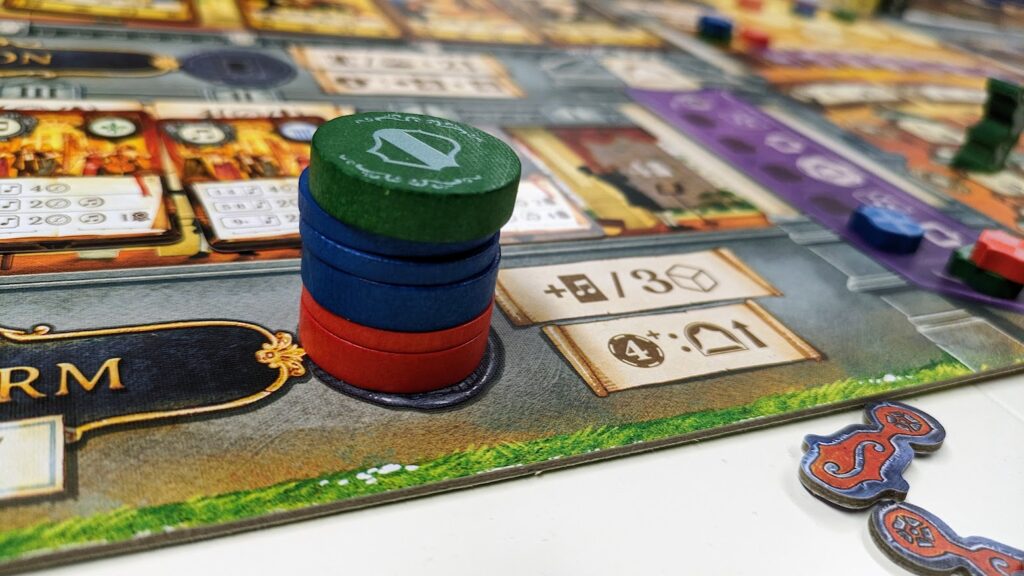
All of this is pulled together with the worker disc placement, which is my favourite part of the game. In turn order, each player places a disc at a time at the various spots on the board. Some of them are on your player boards, whereas the rest are shared spaces on the main board. All players can go to each space as many times as they like, but the interesting part is that each worker is a disc with a value printed on it, and they’re placed face-down in a stack. Each stack is resolved to determine turn order, with the highest value getting first pick of the cards at each respective market. In the event of a tie, which is common as all players start with a 1, 3, and 5 value chip each, it’s first-come, first-served.
It’s great. It adds drama three or four times to every round of the game in a way which is usually reserved for lighter, party-style games.
Final thoughts
If you haven’t guessed by now, I like Luthier a lot. It’s a looker for sure, and even with the early prototype, you’d be forgiven for thinking it was an Eagle-Gryphon game. It all feels premium. Vincent and Guillaume’s artwork is beautiful on the cards and the boards, and there’s nothing that feels out of place or confusing. It’s a game of threes, which pulls it all together nicely too. Three different resources, three types of instruments, and three types of performance. Maybe the future holds an expansion which adds to these, I don’t know, but as the game comes it feels like does enough without muddying the waters.
The hidden bidding worker placement doesn’t feel that important in your first game, which makes it easy to overlook its importance and its impact on the game. Once you make the connections though, it all hits you. The points from the public goals, each of which has different levels of completion (a bit like Ark Nova, a review of which you can read here), are dependent on completing certain types of patrons, or having instruments in different areas of the pit, or different numbers of rare instruments crafted, etc. When the cards you need to complete these goals appear in the market, the competition can be furious. Do you make a big statement and place your 5-chip in the Salon straight away to claim that patron? Or do you just slip your 1-chip there creating a false sense of competition, hoping the other players wage war for those cards while you quietly craft two instruments instead? How well do you think you can read the poker faces of your friends and family?
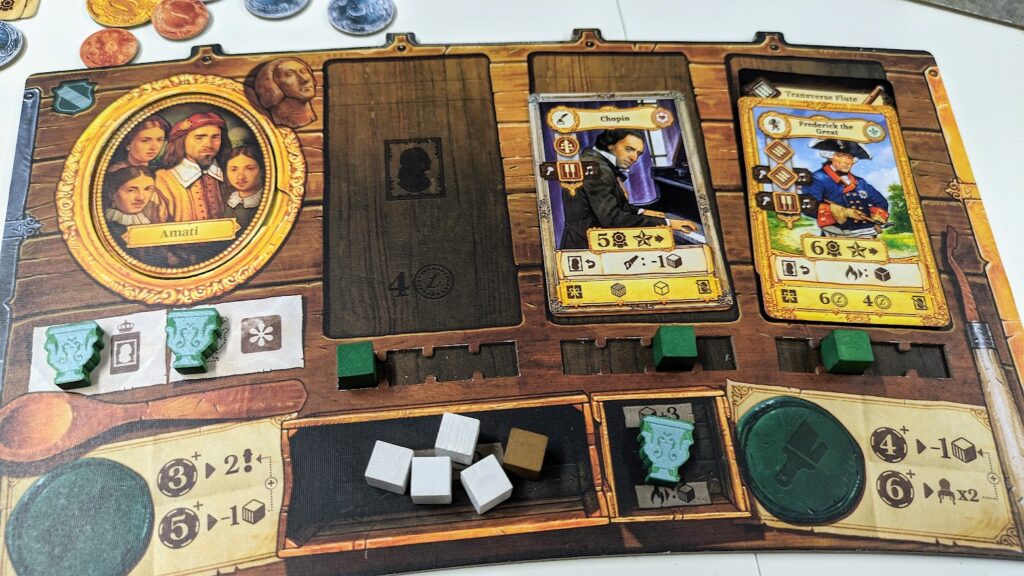
There’s more that I don’t have the time or space to tell you about in detail, for the sake of not turning this into a wall of text. The three tracks to move along for asymmetric boosts. The starting abilities and resources of each family being different. The dance you play in trying to keep your patrons satisfied while still competing on the main board, not only to keep them, but to keep their gifts coming. The only negative I really found during my time with the game was the ‘standard’ two-player game. It blocks some spots in the pit off and reduces the number of cards in the market to keep things competitive, but the drama and tension of the worker bidding doesn’t feel as juicy. The reason I put standard in quotes though is because you can add in the solo bot as a third player, which I recommend doing. There’s more to do in order to run the bot, but the competition is better. I much prefer playing at three and four players though. I love the metagame that takes place above the table between you and your friends.
There are still tweaks to come to the game between now and its release, but even in the state it’s in now, Luthier is a brilliant game. Music to my ears, like clapping along to the Radetzky March at the end of the New Year’s Day content from Vienna. Bravo!
Luthier launches on Kickstarter on July 16th 2024. You can sign up for updates or to back it here – Luthier Kickstarter page.
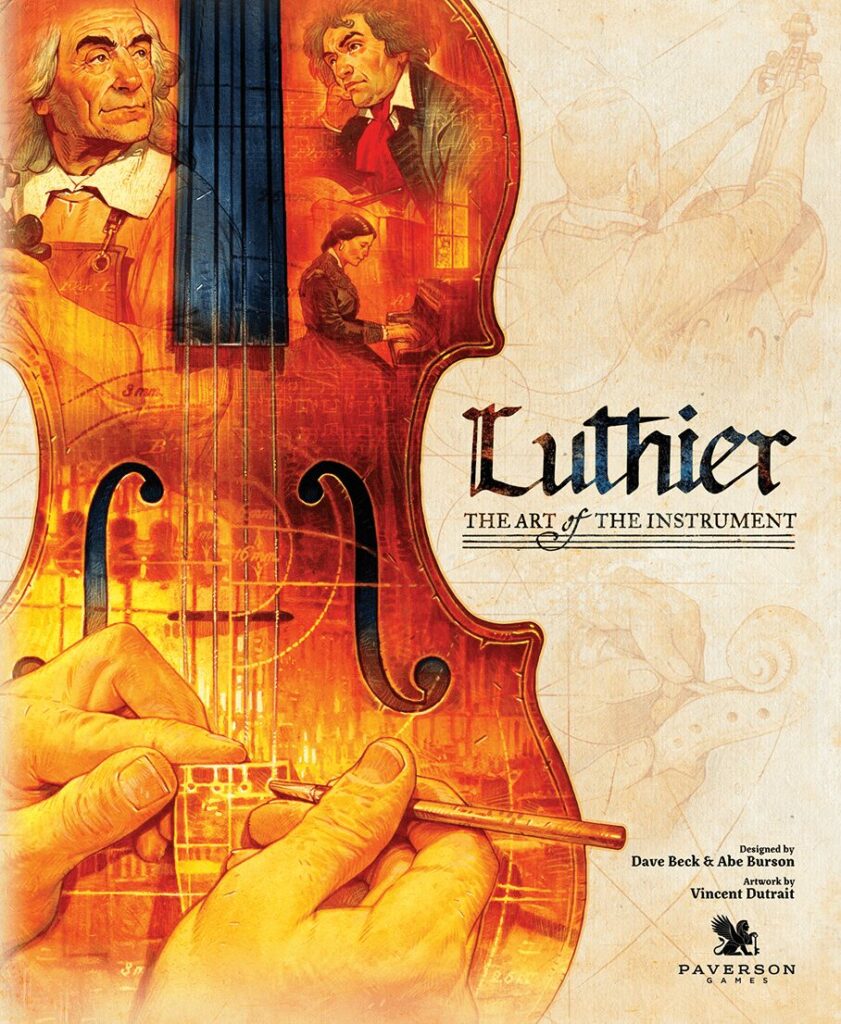
Luthier (2025)
Design: Dave Beck, Abe Burson
Publisher: Paverson Games
Art: Vincent Dutrait
Players: 1-4
Playing time: 90-120 mins









